
Sourdough or sourdough bread is a bread made by the fermentation of dough using wild lactobacillaceae and yeast. Lactic acid from fermentation imparts a sour taste and improves keeping qualities.
Maharashtrian or Marathicuisine is the cuisine of the Marathi people from the Indian state of Maharashtra. It has distinctive attributes, while sharing much with other Indian cuisines. Traditionally, Maharashtrians have considered their food to be more austere than others.
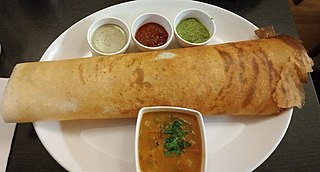
Indian breads are a wide variety of flatbreads and crêpes which are an integral part of Indian cuisine. Their variation reflects the diversity of Indian culture and food habits.

In food processing, fermentation is the conversion of carbohydrates to alcohol or organic acids using microorganisms—yeasts or bacteria—under anaerobic (oxygen-free) conditions. Fermentation usually implies that the action of microorganisms is desired. The science of fermentation is known as zymology or zymurgy.

Tapai is a traditional fermented preparation of rice or other starchy foods, and is found throughout much of Southeast Asia, especially in Austronesian cultures, and parts of East Asia. It refers to both the alcoholic paste and the alcoholic beverage derived from it. It has a sweet or sour taste and can be eaten as is, as ingredients for traditional recipes, or fermented further to make rice wine. Tapai is traditionally made with white rice or glutinous rice, but can also be made from a variety of carbohydrate sources, including cassava and potatoes. Fermentation is performed by a variety of moulds including Aspergillus oryzae, Rhizopus oryzae, Amylomyces rouxii or Mucor species, and yeasts including Saccharomyces cerevisiae, and Saccharomycopsis fibuliger, Endomycopsis burtonii and others, along with bacteria.
Ogiri is a flavoring made of fermented oil seeds, such as sesame seeds or egusi seeds. The process and product are similar to iru or douchi. Its smell is similar to cheese, miso, or stinky tofu.
Munkoyo or ibwatu is a popular drink in rural Zambia. It is a mildly fermented drink made from pounded roots mixed with bits of maize. The mixture can be drunk immediately after it is made or allowed to ferment for several days. It is often called "sweet beer" by Zambians. It is also found in central African countries like Congo where it is used as a drink in traditional ceremonies as well as an ordinary beverage.
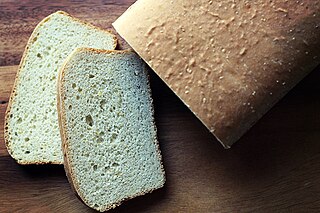
Salt-rising bread is a dense white bread that is traditional in the Appalachian Mountains, leavened by naturally occurring wild bacteria rather than by yeast. Salt-rising bread is made from wheat flour; a starter consisting of either water or milk and corn, potatoes or wheat; and minor ingredients such as salt and sugar.[1] Some common ways of eating salt-rising bread include a slice with sugared coffee poured over it, a grilled cheese sandwich, and the most popular preference, buttered toast.[1]
Keith H. Steinkraus (1918–2007) was an American food scientist who was well known in food fermentation which led to the growth of soy-based foods. He also was involved in bacterial diseases used in the control of European chafer and Japanese beetles in New York state.

Commercial sorghum is the cultivation and commercial exploitation of species of grasses within the genus Sorghum. These plants are used for grain, fibre and fodder. The plants are cultivated in warmer climates worldwide. Commercial Sorghum species are native to tropical and subtropical regions of Africa and Asia.

A dough conditioner, flour treatment agent, improving agent or bread improver is any ingredient or chemical added to bread dough to strengthen its texture or otherwise improve it in some way. Dough conditioners may include enzymes, yeast nutrients, mineral salts, oxidants and reductants, bleaching agents and emulsifiers. They are food additives combined with flour to improve baking functionality. Flour treatment agents are used to increase the speed of dough rising and to improve the strength and workability of the dough.
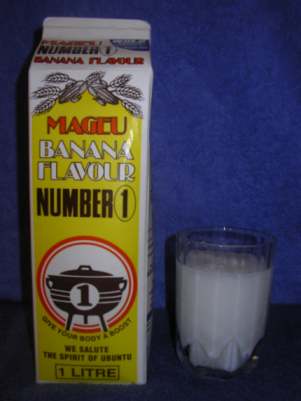
Mageu, Mahewu, Mahleu, Magau (xau-Namibia), Madleke, maHewu, amaRhewu or amaHewu is a traditional Southern African non-alcoholic drink among many of the Chewa/Nyanja, Shona, Ndebele, Nama Khoikhoi and Damara people, Sotho people, Tswana people and Nguni people made from fermented mealie pap. Home production is still widely practised, but the drink is also available at many supermarkets, being produced at factories. Its taste is derived predominantly from the lactic acid that is produced during fermentation, but commercial mageu is often flavoured and sweetened, much in the way commercially-available yogurt is. Similar beverages are also made in other parts of Africa.
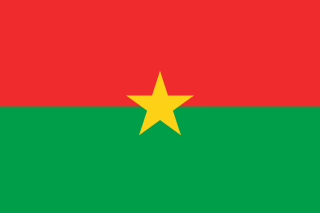
Burkinabé cuisine, the cuisine of Burkina Faso, is similar to the cuisines in many parts of West Africa, and is based on staple foods of sorghum, millet, rice, fonio, maize, peanuts, potatoes, beans, yams and okra. Rice, maize and millet are the most commonly eaten grains. Grilled meat is common, particularly mutton, goat, beef and fish.

Sudanese cuisine is greatly affected by the historical cross-cultural influences of Arab, Nubian, Egyptian, Turkish, and Levantine cuisine in Sudan. Many Sudanese foods have been around for thousands of years. The most common meats eaten are lamb and chicken, in accordance with the Muslim halal laws. Most meals are communal and often shared with family, neighbors, and guests, as part of Sudanese hospitality.

Naem is a pork sausage in Lao and Thai cuisine. It is a fermented food that has a sour flavor. It has a short shelf life, and is often eaten in raw form after the fermentation process has occurred. It is a popular Southeast Asian food, and different regions of Southeast Asia have various preferred flavors, including variations of sour and spicy. Naem is used as an ingredient in various dishes and is also served as a side dish.

Injera is a sour fermented pancake-like flatbread with a slightly spongy texture, traditionally made of teff flour. In Ethiopia, Eritrea, and some parts of Sudan and Kenya, injera is a staple. Injera is central to the dining process, like bread or rice elsewhere and is usually stored in the mesob.
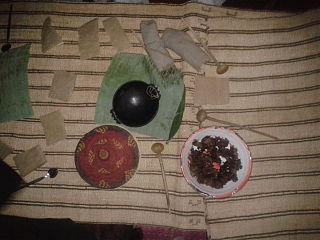
Kocho is a bread-like fermented food made from chopped and grated ensete pulp. The pseudo-stem of the ensete plant contains a pith that is collected, pulped, and mixed with yeast before being fermented for three months to two years. It is used as a staple in Ethiopian cuisine in place of or alongside injera. In 1975 more than one-sixth of Ethiopians depended completely or partially on kocho for a substantial part of their food. It is eaten with foods such as kitfo, gomen, and ayibe (cheese). The stem is pounded to extract the pulp, which is then fermented for several weeks before being cooked. Kocho is often served with stews and is a staple food in some parts of Ethiopia. It has a sour taste and a dense, dough-like texture. It is made from the scraped leaf sheath fibre and pulverised corm of the enset plant. Kocho can be stored underground from three months to twelve months, making it a ready source of nutrition during periods of food scarcity. Kocho is typically used as a utensil to scoop up other foods.
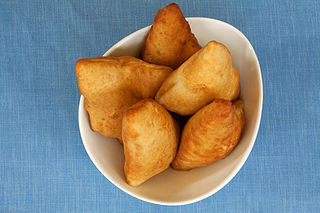
South Sudanese cuisine is based on grains. It uses yams, potatoes, vegetables, legumes, meat, okra and fruit as well. Meat is boiled, grilled or dried.

Kawal is food made of fermented leaves used as a meat substitute indigenous to western Sudan, in particular the Kordofan and Darfur provinces, and eastern Chad. In urban areas, it is used as a condiment, similarly to black pepper. It is also used by low-income families as a primary protein source, substituting or extending meat or fish in stews and sauces. It is created from the fermented leaves of Cassia obtusifolia, a toxic wild legume also known as the kawal plant.
500 Words Magazine is an non-profit independent online publication that provides coverage on a variety of topics related to Sudan and South Sudan. The magazine features articles on arts and culture, society, science and technology, business and economy, and more. The magazine's mission is to present in-depth stories about Sudan and South Sudan in 500 words or more.














